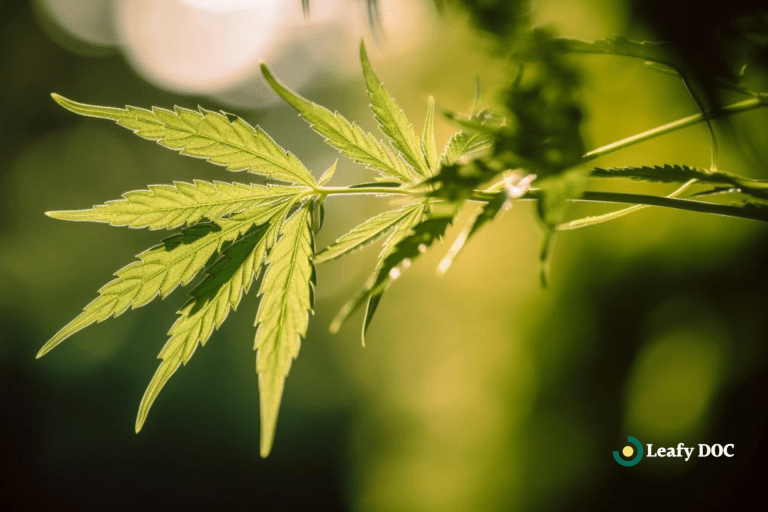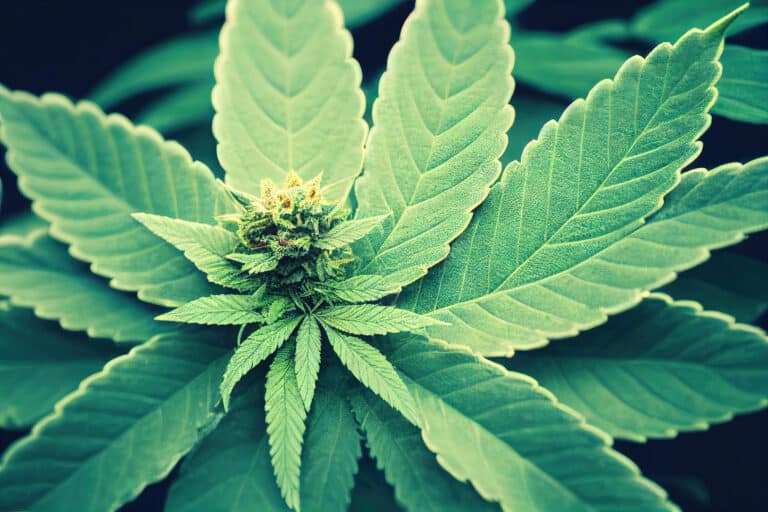Wasting Syndrome
Wasting syndrome or cachexia is a severe side effect of some underlying chronic conditions. When you have wasting syndrome, you typically aren’t motivated to eat, and your body doesn’t seem to hold on to calories and nutrients. Patients report feeling as if their energy has been depleted and may lose significant amounts of weight.
Many conventional medical treatments are available to treat wasting syndrome; however, medical marijuana can be a beneficial alternative. Individuals have been using marijuana for its therapeutic benefits for centuries. Some recent studies show it may help alleviate cachexia symptoms. This article dives deeper into cannabis and wasting syndrome. You’ll learn more about the causes, symptoms, and research behind medical cannabis use for wasting syndrome.
What is Cachexia?
In the later stages of severe and terminal conditions, the human body can enter cachexia, defined by extreme weight loss and significant body fat loss. Wasting syndrome is metabolic and unlike other eating disorders because it is caused by chronic conditions, including HIV/AIDS, COPD, cancer, congestive heart failure, multiple sclerosis, and kidney disease.
Cachexia symptoms include a loss of appetite, severe weight loss, muscle depletion, anemia, fatigue, and weakness. The condition is most prominent in patients in the last stages of life and could be especially fatal for people with cancer.
Associated Illnesses
The conditions that can cause wasting syndrome include:
- Cancer
- Chronic diarrhea
- Chronic obstructive lung disease
- Congestive heart failure
- Crohn’s Disease
- Cystic Fibrosis
- Familial amyloid polyneuropathy
- HIV/AIDS
- Infection-related nutrient loss
- Malaria
- Superior mesenteric artery syndrome
- Tuberculosis
- Rheumatoid Arthritis
Factors that Cause Wasting Syndrome
Various factors contribute to cachexia symptoms, including:
- Metabolism. Wasting syndrome impacts how your body converts food into energy, and you may even require more energy to metabolize food with a chronic disease. Therefore, you may need to increase your calorie intake to maintain average body weight.
- Food intake. Many people don’t feel like eating with a severe chronic illness. Some medications have to be taken on an empty stomach and may even alter your sense of taste. So, patients often feel nauseous and lack the appetite or energy to eat nutritional food.
- Nutrient absorption. Inadequate intake of essential nutrients is a common cause of cachexia. HIV and chronic diarrhea specifically can reduce nutrient absorption and negatively affect the stomach lining.
3 Stages of Wasting Syndrome
There are three stages of wasting syndrome: pre-cachexia, cachexia, and refractory cachexia. Each of these stages presents various symptoms.
Pre-cachexia
Pre-cachexia includes a lack of hunger, altered metabolism, and significant inflammation. In this stage, patients typically lose up to five percent of their body weight directly related to the conditions above.
Cachexia
In the cachexia stage, patients lose more than five percent of their body weight in less than a year due to a chronic illness. Patients will experience more severe symptoms such as lack of appetite, fatigue, inflammation, and muscle weakness.
Refractory Cachexia
Refractory cachexia is related to cancer patients who no longer respond to treatment options. They lose significant muscle mass and the ability to function. Diagnosis of this stage requires a low WHO performance score and a survival period of fewer than three months.
History of Cachexia
In 1987, the U.S. Centers for Disease Control and Prevention (CDC) recognized wasting syndrome as an AIDS-indicator condition. While other diseases have been added to the list, there’s still no defined treatment plan for cachexia. In earlier years, it was entirely overlooked by doctors, who focused on the underlying illness rather than treating cachexia. Luckily, this has changed in recent years as more medical studies have been done.
Wasting Syndrome Statistics
- Over five million people in the U.S. are affected by cachexia
- Nearly sixty percent of kidney disease patients experience wasting syndrome
- Between 16 and 42 percent of patients with heart failure experience cachexia
- Up to 37 percent of patients with initial AIDS-defining diagnosis show signs of wasting.
A 2009 study reports that despite effective HIV treatment, weight loss affects close to ten percent of patients with managed care plans.
A 2004 study notes that detecting early-onset wasting syndrome is challenging due to various factors that cause weight loss in patients with HIV. The authors state that body cell mass (BCM) provides the most substantial evidence of cachexia. However, physicians typically look for the characteristic signs of prolonged-lasting fever and weight loss of more than ten percent of the average body weight.
A 2017 medical review assessed clinical trials that evaluated the value of cannabinoids for HIV wasting. This report concluded that there isn’t enough evidence to prove the effectiveness of cannabinoids for treating symptoms.
In 2016, the research looked at the long-term effects of HIV wasting. It compared the physical function of the below groups:
- 85 men with HIV who survived two years following cachexia
- 249 men with HIV without cachexia
- 338 men without HIV or wasting syndrome
The results indicated that HIV wasting harms muscle strength and physical quality of life for years. The authors link low body weight and poor stability with the following:
- low bone density
- frequent falls
- severe fractures
- overall frailty
Current treatments for Cachexia
While there is no universal cure, effective treatment plans have been developed to prevent, reduce, and reverse cachexia progression. Many patients are given extreme new diet plans to help combat the symptoms.
There are also several therapies doctors can use to address cachexia in patients. These therapies stimulate the appetite via hormonal pharmaceuticals such as megestrol acetate and Medroxyprogesterone Acetate (MPA). However, fewer than thirty percent of patients taking Megace experience short-term appetite improvements.
Other medications, like corticosteroids, are used to reduce inflammation but include some adverse, long-term side effects and are reserved for terminal illnesses. Marinol was first FDA-approved in 1985 for treating chemotherapy-induced nausea and vomiting in patients that don’t respond to other treatments.
How can Cannabis treat Patients with Cachexia?
Opting to try medical marijuana is accessible in many states when looking to relieve cachexia symptoms. Thrty-six states have legalized its recreational and medical use, although it still mains illegal on a federal level.
You’ll need medical records of an illness that is on your state’s list of qualifying medical marijuana conditions to use medical marijuana for wasting syndrome.
Currently, over twenty states have approved wasting syndrome as a qualifying condition for medical marijuana use. You can visit local medical dispensaries and purchase cannabis products that best fit your needs once you have a medical cannabis recommendation and card.
- Medical cannabis can decrease nausea and vomiting associated with cachexia.
- Medicinal marijuana can stimulate the appetite, which is essential for ensuring the patients absorb the appropriate amounts of nutrients from food. Eating also helps reduce the extremity of weight loss in cachexia patients.
- Medical marijuana patients can use cannabis to reduce chronic pain and inflammation.
Inflammation
The inflammatory process occurs when the human body is exposed to a harmful stimulus. It happens as a means to restore homeostasis within the body. Although effective, anti-inflammatory drugs (NSAIDs) have a range of adverse effects, especially in long-term use. Recent research suggests that herbal medicines, including cannabinoids, are becoming well-known as potential anti-inflammatory drugs.
In a recent review published in 2021 called “The Effects of Cannabinoids on Pro- and Anti-Inflammatory Cytokines: A Systematic Review of In Vivo Studies,” researchers found that when cannabidiol (CBD), cannabigerol (CBG), or CBD was combined with delta-9-tetrahydrocannabinol (THC), a reduction in the levels of at least one inflammatory cytokine was observed, and some improvements in disease or disability were observed.
Appetite
In 1999, Marijuana and Medicine: Assessing the Science Base states, “The profile of cannabinoid effects suggests that they are helpful for treating wasting syndrome in HIV/AIDS patients. Although some medications are effective for these issues, they are not equally effective in all patients with:
- Nausea
- appetite loss
- chronic pain
- anxiety
A 2018 study of oral dronabinol in HIV/AIDs patients managing severe weight loss revealed a positive effect on weight gain among cancer patients. Dronabinol was also associated with improved taste, smell, and food enjoyment among patients.
Delta-9 THC can potentially promote weight gain in patients, as well as reducing nausea and vomiting associated with chemotherapy. A few, studies have been conducted with delta 9-THC to determine the drug’s capacity to ease low appetite and wasting in those with cancer, cachexia, or HIV.
One of the earlier medical trials in 1976, found that oral delta-9-THC doses of up to fifteen milligrams stimulated appetite and produced significant weight gain in advanced cancer patients.
Best Medicinal Strains for Cachexia patients
There are various cannabis strains available to purchase in legal states. Speaking with your medical provider and an experienced budtender is the best way to find your match.
Marijuana is an effective appetite stimulant, as mentioned previously. Additionally, it helps to treat vomiting, nausea, anxiety, depression, and general symptoms of wasting syndrome.
To choose the right strain for your treatment, you’ll want to understand your symptoms and how medical marijuana can help. Each type of marijuana (indica, sativa, hybrid) can treat specific symptoms. Below, we provide a few strains that are reported to significantly help patients who are diagnosed with wasting syndrome.
Blue Dream is a Sativa strain with over twenty-two percent THC and two percent CBD. It provides a balanced, euphoric high that will make you feel creative and hungry. It’s an excellent strain for promoting appetite in those that aren’t motivated to eat.
Girl Scout Cookies is an Indica dominant hybrid in the Bay Area of California. It has 19 percent THC, and one percent CBD and its parent strains are OG Kush and Durban Poison. The flavors are sweet and minty with an aroma of vanilla, just like a thin mint. GSC has an average of ten weeks of flowering time indoors and will put you in the mood to eat. This cake strain is used to treat muscle spasms, nausea, appetite loss, and depression.
Purple Punch originated in Southern California and is a cross between Larry OG and Granddaddy Purple. It has 18 percent THC and zero percent CBD content. This strain boasts a tart grape flavor that smells of berries.
The Purple Punch strain is typically used to treat nausea, insomnia, stress, and body aches. Purple Punch provides a feeling of euphoria at first, then leaves you relaxed and with an appetite for flavorful food.
Ringo’s Gift is a high CBD strain with an average CBD-to-THC ratio of 13:1; strains as high as 20:1 have been cultivated. Because of the high CBD, the THC interacts differently and enhances medicinal properties. Users boast relief for stress and anxiety, its sedative effects, and full-body relaxation.
Trainwreck originated in Northern California and has 17 percent THC and 1 percent CBD. It’s a cross between Thai and Mexican Sativa with unknown Indica. It has lemon and pine flavor, aroma profiles, and a shorter outdoor flowering period than many Sativas. This strain can treat anxiety, arthritis, PTSD, fatigue, and ADHD. The euphoric and cerebral effects encourage creativity and boost energy with significant anti-inflammatory effects.
OG Kush originated on the West Coast and was first grown in Florida. It is a balanced hybrid strain with 18 percent THC and zero CBD content and crosses Chemdawg, Lemon Thai, and the Hindu Kush. The flavor is sweet citrus, while the aroma of OG Kush is piney with a strong diesel smell. OG Kush is used to help treat stress, depression, anxiety, nausea, and appetite loss.
Top ways to Consume Marijuana for Wasting Syndrome
Smoking is one of the most common ways to use medical marijuana. However, some people have conditions that prevent smoking, and some patients prefer other consumption methods.
Below are some of the alternative ways an MMJ patient can consume medicinal cannabis:
- Juicing. Blend raw, fresh cannabis leaves and combine them with juices.
- Sprays. There are cannabis sprays available in various flavors. They are also convenient, discreet, and easy to use.
- Suppositories. Medical cannabis can be easily made into suppository form. Several suppository-making kits available online and in health stores can use marijuana powder.
- Vaping. Vaping provides quick, effective relief without all the toxic components of smoking flower.
- Tinctures. Tinctures are alcohol-based extracts that can conveniently be placed in food or beverages.
- Edibles. Edibles can be store-bought or homemade. You can also purchase cannabis-infused candies that offer fast relief if you have difficulty eating.
Summary
While medical marijuana may not be mainstream enough to be the leading treatment for wasting syndrome, it has increased in popularity among MMJ patients in recent years due to promising research. Due to the anti-inflammatory and appetite-stimulating effects of cannabis, we recommend discussing MMJ as a treatment option with your medical provider if other treatments and medications aren’t working properly. Visit Leafy DOC to apply for an MMJ card and chat with a health coach today.
Last Updated: June 14, 2024
Get Your Medical Card
Connect with a licensed physician online in minutes
Table of Contents
Keep Reading
-
Understanding Cannabis: An Educational Guide For Senior Citizens
Uncover the advantages and precautions of cannabis use for seniors in our insightful guide. Navigate the realm of medical marijuana with ease and make informed decisions today! Explore Cannabis Education for Seniors now.
-
Cannabis Classification: Hallucinogens, Stimulants, & Depressants
Confused if cannabis is a hallucinogen, stimulant, or depressant? Find out here! Learn the truth about classifying cannabis and understand the effects it has on your body.
-
Relieving Stress With CBD For Wellness
Relieve Stress and Improve Wellness with CBD – Start Your Journey to a Stress-Free Life Today! Discover the Benefits of CBD for Stress Relief and Take Control of Your Wellbeing. Click Now to Learn More!



